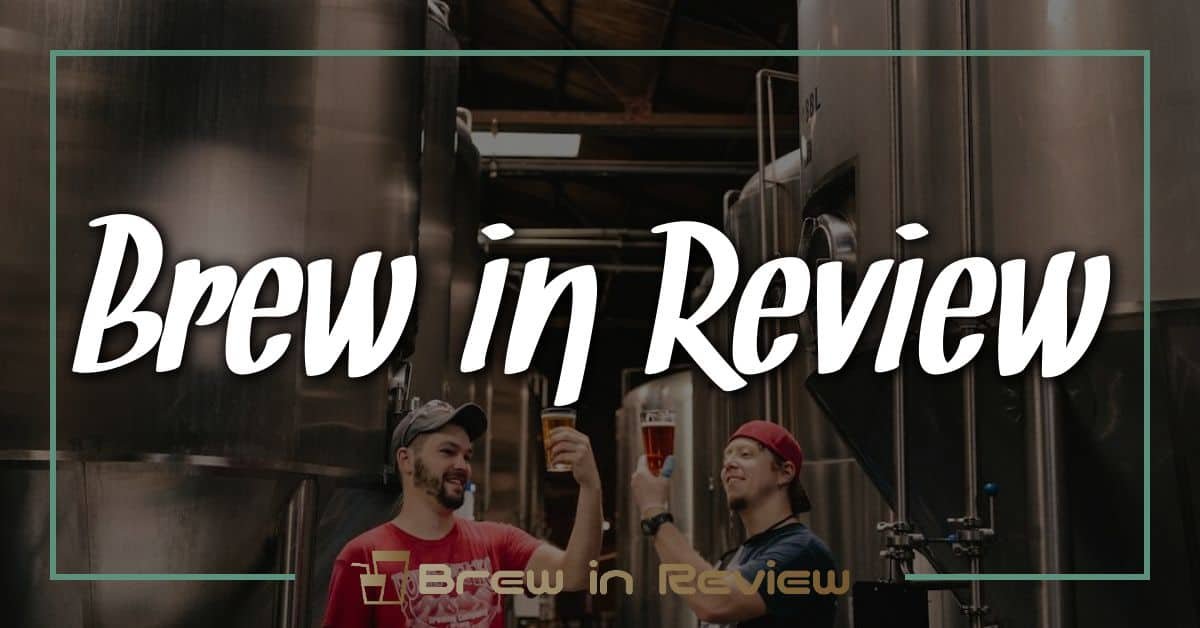Starting your brewing journey can feel overwhelming with all the jargon floating around. But don’t worry, I’ve been there too! Understanding the basic terminology is the first step to mastering the art of brewing, whether you’re crafting your first cup of coffee or brewing your own beer.
Essential Brewing Terms
Understanding brewing terminology simplifies the brewing process and builds confidence. I’ve compiled some key terms that every beginner should know, covering both ingredients and equipment.
Ingredients Terminology
- Malt: Malt refers to grains that have been soaked, germinated, and dried. Barley is the most common malt used in brewing, impacting flavor and color.
- Hops: Hops are flowering plants that add bitterness and aroma to beer. Different hop varieties provide distinct flavors, ranging from floral to citrusy.
- Yeast: Yeast is a microorganism that ferments sugars, producing alcohol and CO2. Various yeast strains influence the beer’s final taste and mouthfeel.
- Water: Water quality affects the brewing process significantly. The mineral content in water can enhance or mute flavors in the beer.
- Adjuncts: Adjuncts are additional fermentable sugars used in brewing, such as corn or rice. They lighten the body of the beer and can adjust flavor.
Equipment Terminology
- Brew kettle: The brew kettle is where wort is boiled, and hops are added. It’s essential for ensuring proper extraction of flavors and sterilization.
- Fermentation vessel: This container holds the wort once yeast is added. A closed fermentation vessel helps maintain a controlled environment for yeast activity.
- Hydrometer: A hydrometer measures the specific gravity of the liquid, allowing you to track fermentation progress and calculate alcohol content.
- Airlock: An airlock allows CO2 to escape during fermentation while preventing contaminants from entering the fermentation vessel.
- Bottling bucket: The bottling bucket simplifies the bottling process by providing a spigot for easy transfer of beer into bottles.
Familiarity with these terms enhances understanding of the brewing process and helps navigate recipes and brewing discussions. Each term holds importance in creating quality beverages.
Brewing Process Vocabulary
Understanding brewing terminology is essential for navigating the brewing process with confidence. Here are key terms related to the steps of brewing and common techniques that every beginner should know.

Steps of Brewing
- Mashing: Mashing involves soaking crushed malt in warm water to activate enzymes, converting starches into fermentable sugars.
- Lautering: Lautering separates the liquid wort from the solid grain after mashing. Sparging may occur during this step to rinse out more sugars.
- Boiling: Boiling the wort kills off any unwanted bacteria and is when hops are added. This step influences bitterness, aroma, and flavor.
- Cooling: Cooling the boiled wort quickly is crucial to avoid contamination. I often use an immersion chiller for faster results.
- Fermentation: Fermentation occurs when yeast converts sugars into alcohol and carbon dioxide. This process lasts from several days to several weeks, depending on the style.
- Conditioning: Conditioning refers to the maturation of beer after fermentation. This step improves flavors and carbonation levels.
- Bottling: Bottling involves transferring beer into bottles for packaging. I usually add priming sugar during this step to encourage carbonation.
Common Techniques
- Dry Hopping: Dry hopping adds hops post-boil for aroma without significant bitterness. I often use this technique for my IPAs to enhance their fragrance.
- Batch Sparging: Batch sparging is a method where the wort is drained from the mash tun, and fresh sparge water is added in a single step. It’s a straightforward approach for home brewers.
- Partial Mash: Partial mash brewing combines malt extract with some specialty grains. This method bridges extract brewing and all-grain brewing.
- Kegging: Kegging is an alternative to bottling, allowing for easier storage and serving. It’s a technique I enjoy for the convenience it offers.
- Wild Fermentation: Wild fermentation uses naturally occurring yeasts and bacteria. This technique produces unique and complex flavors, offering an exciting avenue for experimentation.
- Cold Brew: Cold brewing, often associated with coffee, can also apply to certain beer styles. It emphasizes smooth flavors and reduced acidity.
Familiarity with these terms helps beginners feel comfortable in discussions about brewing. As you experiment and practice, these concepts become second nature, enhancing the overall brewing experience.
Types of Beer Terminology
Understanding beer terminology enhances the brewing experience. Familiarity with specific terms helps navigate various styles and flavor profiles. Here are some essential subcategories.
Brewing Styles
- Lager: A clean, crisp beer fermented at low temperatures. It’s known for its smoothness and often has a light flavor.
- Ale: Fermented at warmer temperatures, ales exhibit fruity and complex flavors. Common subtypes include pale ale, India pale ale (IPA), and porter.
- Stout: A dark, rich ale with flavors of coffee, chocolate, and caramel. It’s known for its creamy texture and full body.
- Wheat Beer: Brewed with a significant proportion of wheat, these beers are often light and refreshing. Hefeweizen is a popular example, featuring banana and clove notes.
- Sour Beer: Characterized by a tart flavor profile, sour beers undergo fermentation with wild yeast or lactic acid bacteria. They include styles like lambic and Berliner weisse.
Flavor Profiles
- Hoppy: Strong aromas and flavors from hops, often characterized by bitterness. Common in IPAs and pale ales, these flavors include citrus, pine, and floral notes.
- Malty: Sweet, bready flavors derived from malted grains. These flavors are prominent in stouts, porters, and some amber ales.
- Fruity: Notes of various fruits can emerge from the yeast or additional ingredients. Look for berries, citrus, or tropical fruit in many styles.
- Spicy: Certain styles, particularly wheat beers, can exhibit spicy flavors from yeast or added spices, like coriander or ginger.
- Roasty: Darker beers often showcase roast malt flavors, bringing notes of coffee and chocolate. Stouts and porters frequently highlight this profile.
Troubleshooting Terms
In brewing, knowing how to troubleshoot common issues can significantly improve your experience and enhance the quality of your final product. Here are some prevalent problems and ways to address them.
Common Issues
- Inconsistent Fermentation
Inconsistent fermentation results in unexpected flavors and alcohol levels. This issue often stems from temperature fluctuations or insufficient yeast health.
- Off-Flavors
Off-flavors can appear due to various factors, such as contamination, improper fermentation, or ingredient quality. These undesired flavors, like sourness or astringency, detract from the final brew.
- Low Carbonation
Low carbonation might occur when there’s not enough sugar for fermentation during bottling or inadequate yeast activity. This can lead to flat beer, which most drinkers find unappealing.
- Clarity Problems
Cloudy beer results from yeast or protein haze. This may stem from insufficient clarification techniques or incomplete fermentation.
- Brett or Wild Yeast Contamination
Unwanted yeast strains can spoil a batch, causing unexpected and often unpleasant flavors. These strains sometimes enter through unclean equipment or cross-contamination during the transfer process.
Solutions and Tips
- Maintain Constant Temperatures
I always monitor fermentation temperatures using a thermometer and adjust them if there’s a swing outside the yeast’s ideal range. A temperature-controlled environment makes a difference.
- Use Quality Ingredients
I recommend sourcing fresh, high-quality ingredients as they directly affect flavor and aroma. Check expiration dates on all items, including hops and yeast.
- Ensure Yeast Health
I always rehydrate dry yeast according to the manufacturer’s instructions to guarantee active fermentation. Healthy yeast makes for a reliable fermentation process.
- Sanitize Everything
I strictly adhere to sanitation practices across brewing equipment. Using a no-rinse sanitizer minimizes contamination risks, protecting against off-flavors.
- Add Priming Sugar Correctly
When bottling, I ensure to measure priming sugar accurately to promote proper carbonation. If carbonation fails, I sometimes add a bit more in future batches for consistent fizz.
- Clarify Sequentially
To address clarity issues, I use fining agents like gelatin or cold crash my beer before bottling. These methods help precipitate unwanted materials, resulting in a clearer final product.
- Taste and Adjust
I always taste my beer at various stages. If off-flavors appear, I document potential culprits for the next batch. Understanding what went wrong leads to better outcomes in future brews.
Conclusion
Getting started in brewing can feel overwhelming but understanding the key terminology makes all the difference. It opens up a world of creativity and experimentation that I find incredibly rewarding. As I’ve learned more about the ingredients and equipment, my confidence has grown, and I’ve enjoyed every step of the process.
Embracing the vocabulary helps not just in brewing but also in connecting with fellow enthusiasts. It’s all about sharing experiences and learning from each other. So don’t hesitate to dive in and start brewing. Each batch is a chance to discover something new and delicious. Happy brewing!




